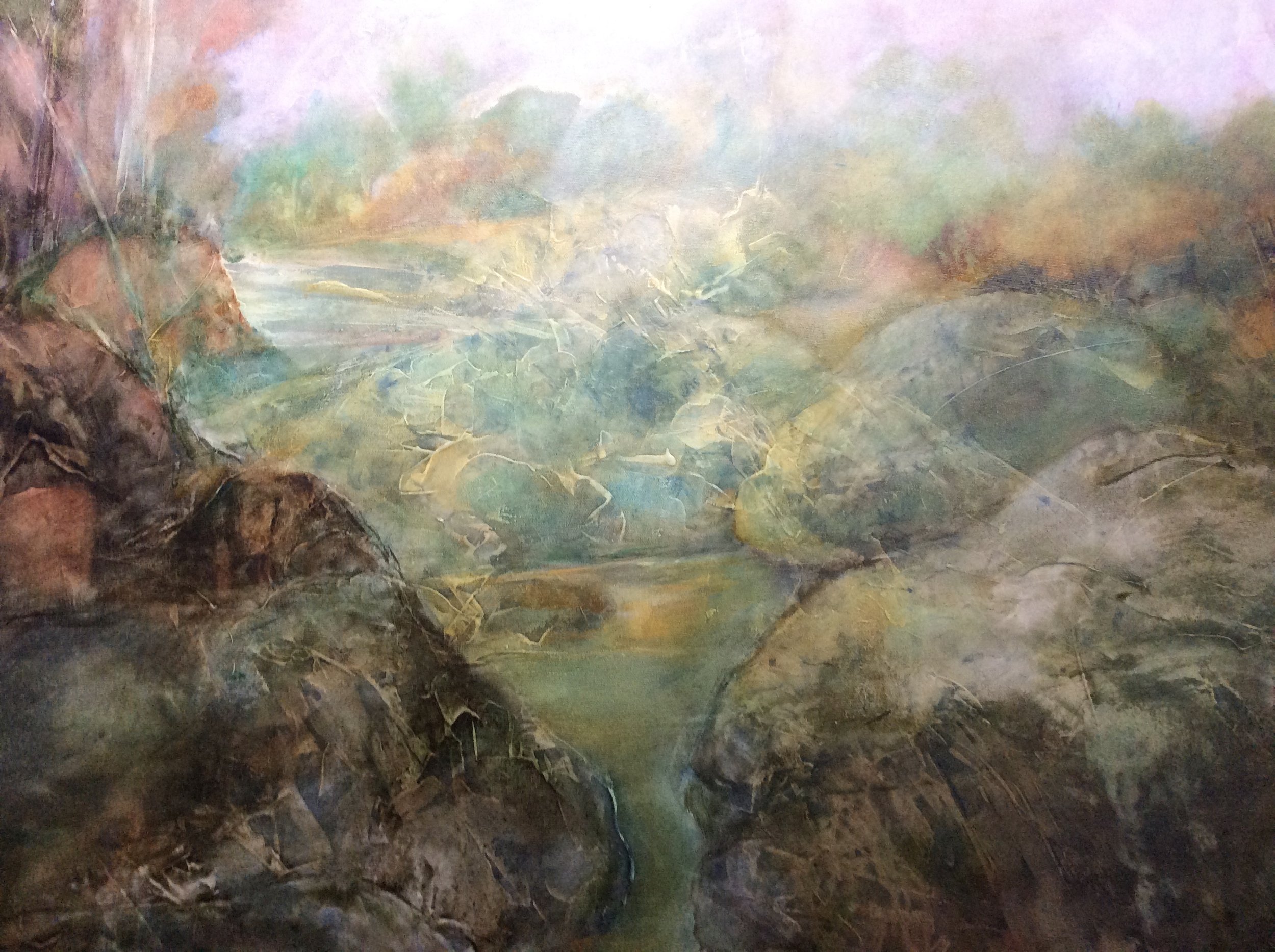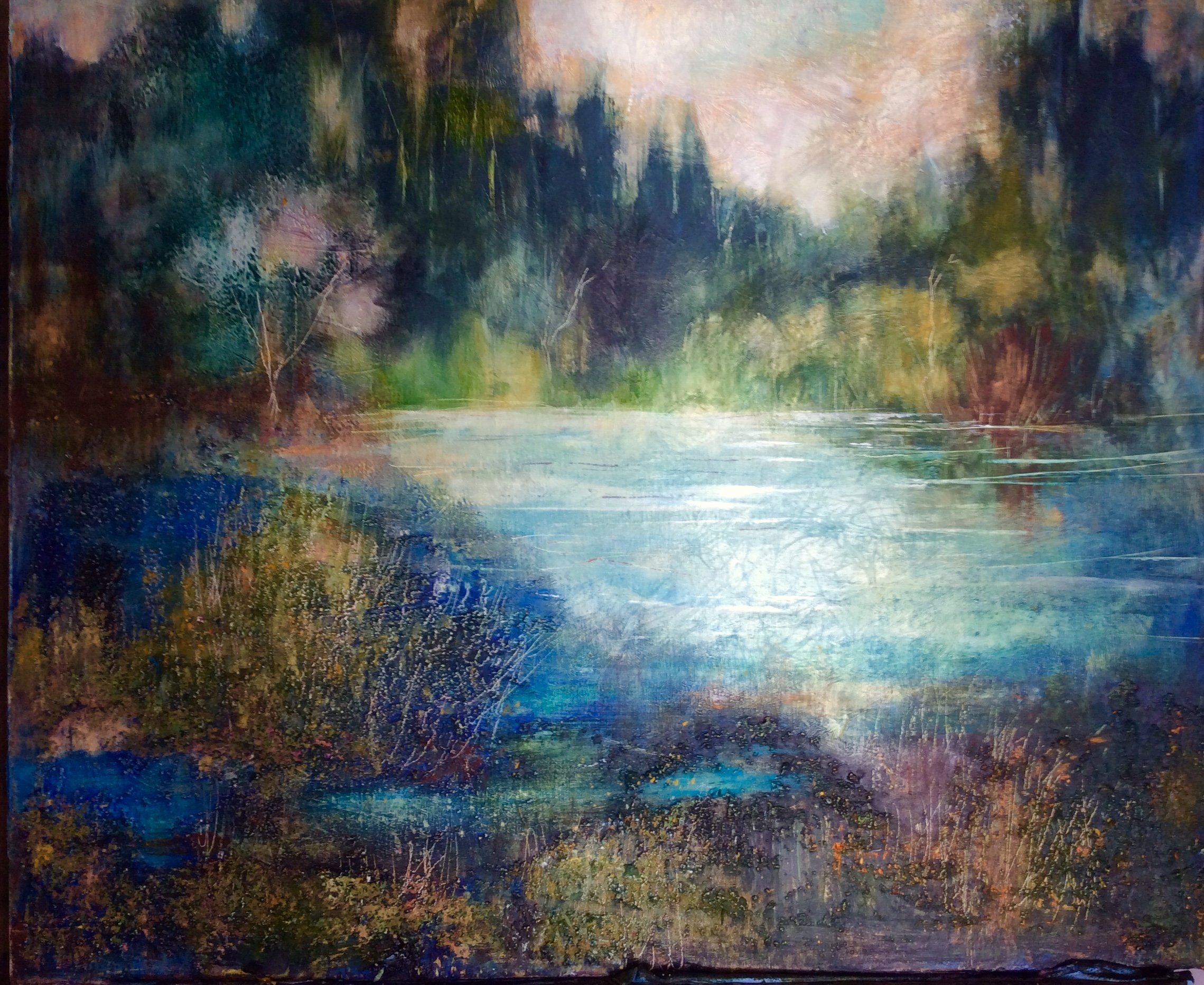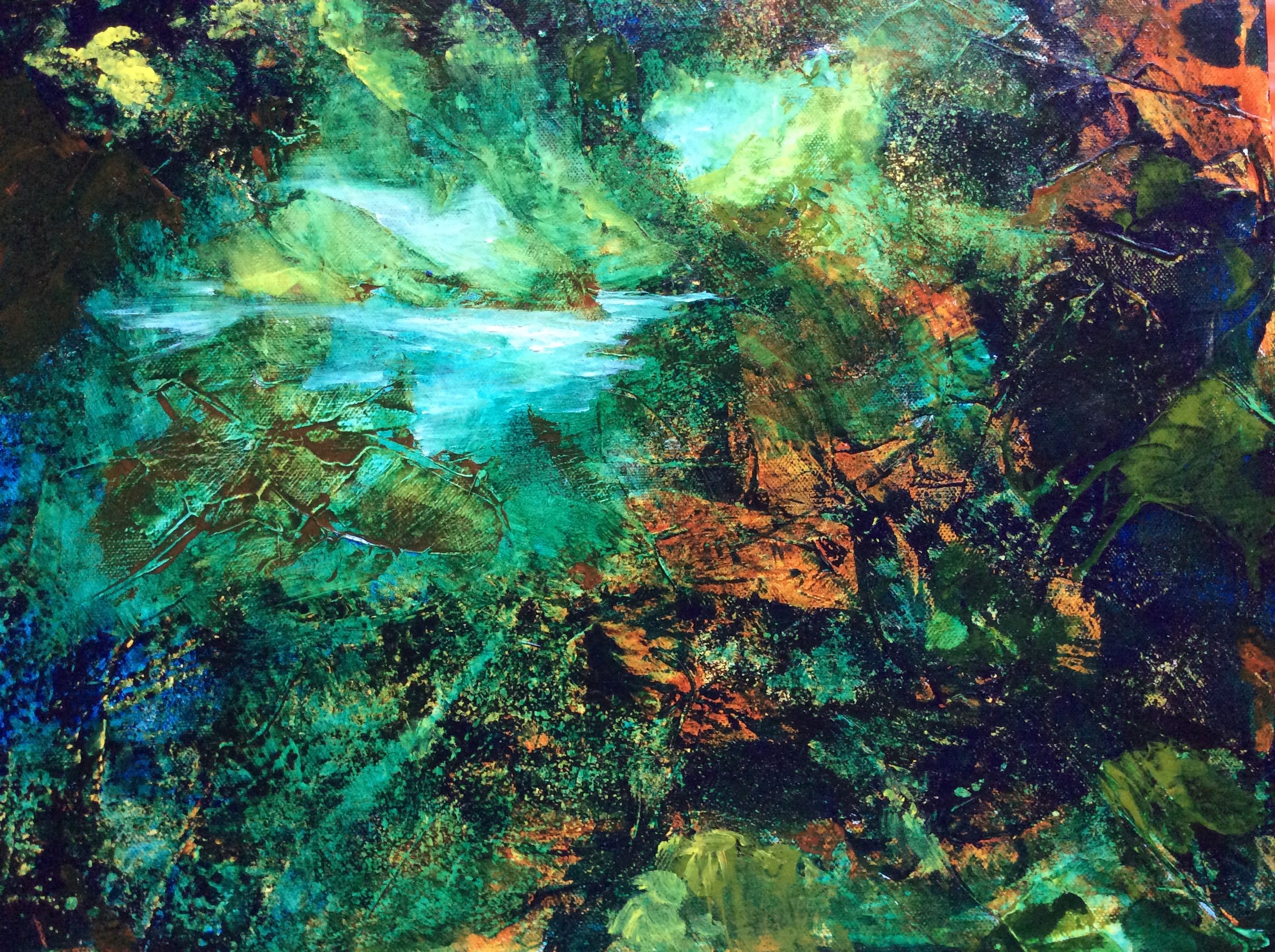Interview
Barbara DeMott
Barbara has a BA, MA, and PhD from Columbia University, New York City. After completing her PhD, Barbara taught world art history courses at Emily Carr University of Art and Design, Langara College, and Simon Fraser University. After almost 25 years teaching in Vancouver, she went on to teach at the University of Hawaii as a visiting professor.
Barbara started creating art full time after she retired from teaching. She enjoys landscape painting as well as conservation work, spending many long hours hiking and walking in the forest and on beaches — an activity that helps her focus on her paintings.
Barbara has exhibited brush painting in Canada and Japan. Her watercolors and oils can be found in public galleries and private collections in Canada.
What is your background and how did you start your journey in the art world?
“I’ve always focused on arts since childhood. Later, fascinated by the variations in human culture, I completed my PhD in art history and cultural anthropology. Surrounded by budding artists in my teaching, and stimulated by my research in Asia and Africa, I chose to study arts hands-on to gain a more intuitive understanding of the subject matter that I taught.
I studied Chinese brush painting and calligraphy with noted artists from China in order to understand traditional composition and technical perspectives. My teacher rewarded me with a Chinese name, Baolan—Precious Orchid—with which I sign my paintings. It is only after early retirement that I have been able to focus exclusively on landscape painting.”
What inspires you most?
“Painting landscapes is an aesthetic response to the spiritual connection I feel with the energies that surround me in the forests and ocean around my Pacific Northwest Coast home. My daily walks are a moving meditation, during which I lose myself while I marvel at the light and colors, and the sense of microcosmic cycles of death and rebirth experienced in the natural world.”
“I’m compelled by a sense of urgency to paint about my experience in this natural cathedral because human society has become increasingly alienated from the earth and its beauty.”
What themes do you pursue? Is there an underlying message in your work?
“Living on the edge of the Pacific Ocean and amidst the magnificent evergreen forests of British Columbia, I hope to convey my respect for nature: its moods, vibrancy, and power. Since my retirement, I have focused on two related endeavors: landscape painting as well as conservation and park making. Through both my visual expression and practical activism, I hope to share and celebrate the power and integrity of the natural world.”
How would you describe your work?
“My painted landscapes don’t depict a specific place, but rather constitute imagined landscapes conjured from meditative experiences in the forest or along the ocean. They use a limited palette and a soft gaze, frequently incorporating a balance of positive and negative space. I paint as much about an image as about the materials, since the exploration of color and texture often balance the composition and representation.”





Which artists influence you most?
“Both contemporary and historic artists of the East and West serve as influences. Artists from the West include contemporary artists James McNaughton and David Taylor from the UK, and Samantha Keely Smith and Maurice Sapiro from the U.S.. Chinese painters of the 20th century Zao Wou-ki and Zhang Daqian as well as kiyo-e painter Hiroshi Senju complete the list.”
What is your creative process like?
“I usually look at photos taken during my walks as a way to recover significant moments. I play with a variety of compositions by drawing with monochromatic watercolor washes. I proceed to paint over these washes, usually fully obscuring with layers of either oil or acrylic washes. I use a natural palette that focuses on transparent colors. Sometimes I overlay gold leaf or metallic dust, while at other times I start with gold leaf and paint over it.”
What is an artist’s role in society and how do you see that evolving?
“Visual arts are in a remarkable position to communicate nonlinear connections in thinking and psycho-sensory references. They are able to transcend boundaries because of the immediacy of the image. I am hopeful artists will remain true to the intent of not only intellectual, but also emotional content through aesthetic universals.”
Have you had any noteworthy exhibitions you'd like to share?
“I would like to highlight the following:
2022 - One of three artists in The Spirit of the Forest, Sunshine Coast, BC.
2021 - Represented in a chapter of the book, Creative Sanity by the Exhale Art Network
2021 - Two paintings in ‘Into the Woods, The Cultural Center of Cape Cod’.
2020 - Avenue Art Gallery, Montreal, participant in the Brush Off award and exhibit.”
Website: www.barbarademott.com
Other: @BarbaraDeMott












